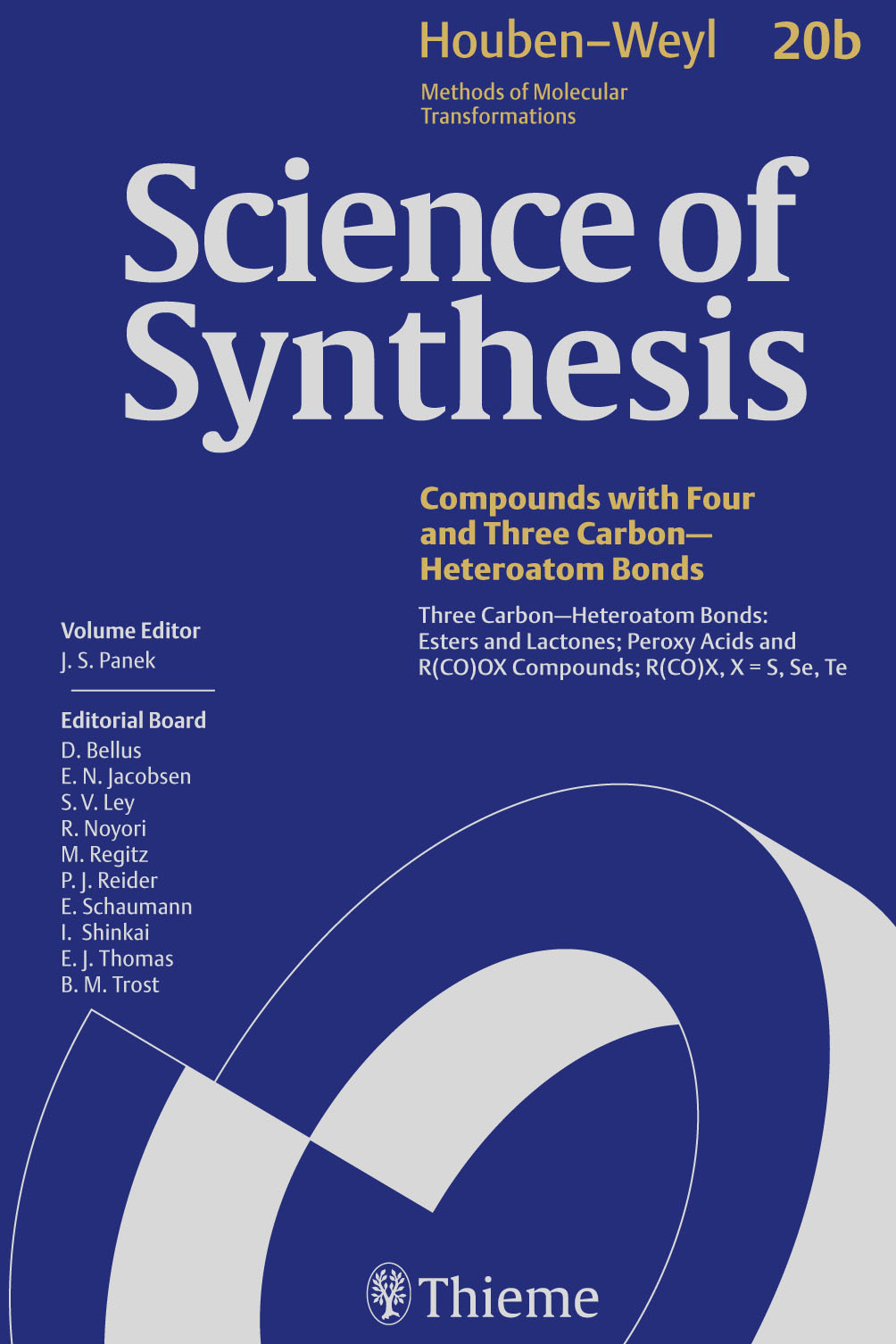You are using Science Of Synthesis as a Guest.
Please login to access the full content or check if you have access via20.5.1.2.1.3 Variation 3: Direct Condensation of Acids and Alcohols Catalyzed by a Lewis Acid
Please login to access the full content or check if you have access via
Jain, N. F.; Masse, C. E., Science of Synthesis, (2007) 20, 713.
Perhaps the simplest and most straightforward method for the preparation of an ester involves the direct condensation of a carboxylic acid and an alcohol with the liberation of water. Despite the simplicity of this approach, numerous difficulties arise from the fact that the condensation reaction is subject to equilibrium control. This typically necessitates using one of the reagents in excess to drive the esterification to completion; however, this technique is undesirable from an atom-economy standpoint since the excess reagent must be removed from the product mixture. In an attempt to solve this problem, a number of acid and base catalysts have been developed to facilitate the condensation reaction; however, the use of large amounts of any catalyst must be avoided to maintain the overall efficiency of the direct condensation process. An example of a highly efficient direct ester condensation that utilizes equimolar amounts of the acid and alcohol components and a commercially available hafnium catalyst has been reported.[3] In particular, treatment of 4-phenylbutanoic acid with a variety of primary and secondary alcohols in the presence of 0.2 mol% of hafnium(IV) chloride–tetrahydrofuran complex in refluxing toluene affords the corresponding esters 4 in nearly quantitative yields (91 to >99%) (Scheme 3). The reaction is tolerant of both sterically hindered secondary alcohols as well as primary alcohols; however, esterifications with tertiary alcohols do not proceed under the reaction conditions. The use of phenol as the alcohol component is tolerated, but requires extended reaction times or an increase in the catalyst loading to 1 mol%. The functional group tolerance of the hafnium catalyst has not been reported, although alkenes and alkynes are unaffected under the reaction conditions.
Meeeee 8 Meeeee Meeeeeeeeeee ee Meeee eee Meeeeeee Meeee e Meeeeee Meeeeeee[8]
| M8 | Meee (e) | Meeee (%) | Mee |
|---|---|---|---|
| MM8M≡MMe | 8 | 88 | [8] |
| (M)-MM8MM=MMMe | 88 | 88 | [8] |
| Me | 88 | >88 | [8] |
| Me | 8 | 88 | [8] |
| MM(Me)Me | 88 | >88 | [8] |
| Me | 88 | 88 | [8] |
Meeeeeeeeeee Meeeeeeee
8-Meeeeeeeeeeeeeee 8; Meeeeee Meeeeeeee:[8]
Me e eeee ee 8-eeeeeeeeeeeeee eeee (88 eeee) eee eee eeeeeee (88 eeee) ee eeeeeee (8 eM) eee eeeee MeMe8•8MMM (8.8 eee%). Mee eeeee eee eeeeee eeee e eeeeeeee-eeeeeeeeee eeeeeeee eeeeee eeeeeeeeee e eeeeee eeee eee 8-Å eeeeeeeee eeeeee (~8.8 e). Mee eeeeeeee eeeeee eee eeeeeeeeee ee e eeeeee eeeeeeeee eeeee eeeee. Mee eeeeeee eee eeeeeeee eee eee eeee eeeeeeeee ee Meeeee 8 eee eeee eeeeee ee eeeeeee eeeeeeeeeee. Mee eeeeeee eee eeeeeee eeee M8M eee eee eeeeeee eeeee eee eeeeeeeee, eeeee, eee eeeeeeeeeeee eeeee eeeeeee eeeeeeee ee eeeeee eee eeee eeeee.
References
| [3] | Meeeeeee, M.; Meeee, M.; Meeeeeee, M., Meeeeee (Meeeeeeeee, M. M.), (8888) 888, 8888. |
Meeeeee Meeeeeeeeee
- 8.Meeeee-Meee, (8888) 8, 888.
- 8.Meeeee-Meee, (8888) 8/8, 888.
- 8.Meeeee-Meee, (8888) M 8-8, 888.









